Situated on the western coast of the country, Gujarat is one of India’s most vibrant states. From giving freedom fighters like Sardar Patel and KM Munshi to India’s current Prime Minister Narendra Modi and Business tycoons like Dhirubhai Ambani and Gautam Adani, Gujarat’s contribution is immense and today, I am here to take you on a ride to Gujarat’s cultural capital, Vadodara.
Vadodara, situated on the banks of river Vishwamitri, is known for its unique mix of culture and economy. While the City has turned into an Economic hub with industries like petrochemicals, engineering, and pharmaceuticals thriving in it, there are imprints of the culture that has become a part of Vadodara with each era that the City has gone through. Let’s know more about this Kala Nagari in more detail
History of Vadodara
Vadodara, the second largest city of Gujarat, has a history of more than 2000 years. The city earlier known as Chandravati was named after Their ruler, King Chandan, and then Viravati, the abode of rulers.
Due to the presence of abundant Banyan trees, the city was named, Vadpadraka or Vadpatra. However, as time passed, the city came to be known as Baroda, and later on, it became Vadodara in 1974.
Vadodara developed from a small township in the 5th century CE to a full-fledged city under the rule of Khail Khan, the son of Mahmud begada, who ruled Gujarat in the 14th century CE.
However, the Vadodara we see today is only because of one man who not only ruled the city but also gave an identity to it through his reforms and efforts. This ruler was none other than Maharaja Sayajirao Gaekwad (third) from the Gaekwad dynasty who ruled the state from 1875 to 1939 when he left for his heavenly abode. From the electrification of Vadodara to promoting industries and implementing compulsory education for children of every section of society, Sayajirao Gaekwad became the face of a transformed Vadodara that we deem to witness today.
Places to Visit in Vadodara
Did you know that Vadodara is known by several other names apart from the title of “cultural capital”? Vadodara is also known as Kala Nagari, the city of arts as it is home to some of Gujarat’s best-preserved spots that ooze nothing but historical and architectural brilliance! Here are some of these places that you must visit when traveling to Vadodara!
1. Champaner-Pavagadh:
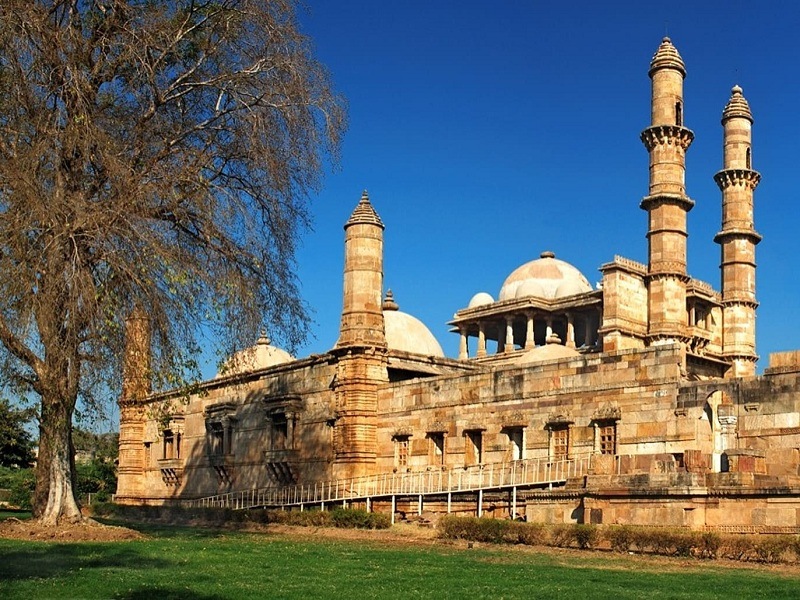
Situated an hour away from the city of Vadodara, the Champaner-Pavagadh is a UNESCO-declared heritage site created in the 8th century. The Champaner is a well-known historic city that flourished from the 8th to the 14th century. On the other hand, the Pavagadh is a 2600 feet high hill that is also one of the country’s oldest rock formations. Helical stepped-well, Sakar khan’s Dargah, city gate, Kasbin talao, citadel walls, Sahar ki masjid (Bohrani), Jami masjid, Lila gumbaz ki masjid, Kabutar Khana pavilion are some of the iconic monuments located at Champaner city. While the Pavagadh hill is home to Kalika mata temple, a major Hindu temple that attracts many devotees around the year. The Park is open for visitors from Monday to Sunday from 8 AM to 5 PM and the Cost of entering is Rs.30 for Indians and Rs.500 for Foreigners.
2. Laxmi-Vilas Palace:
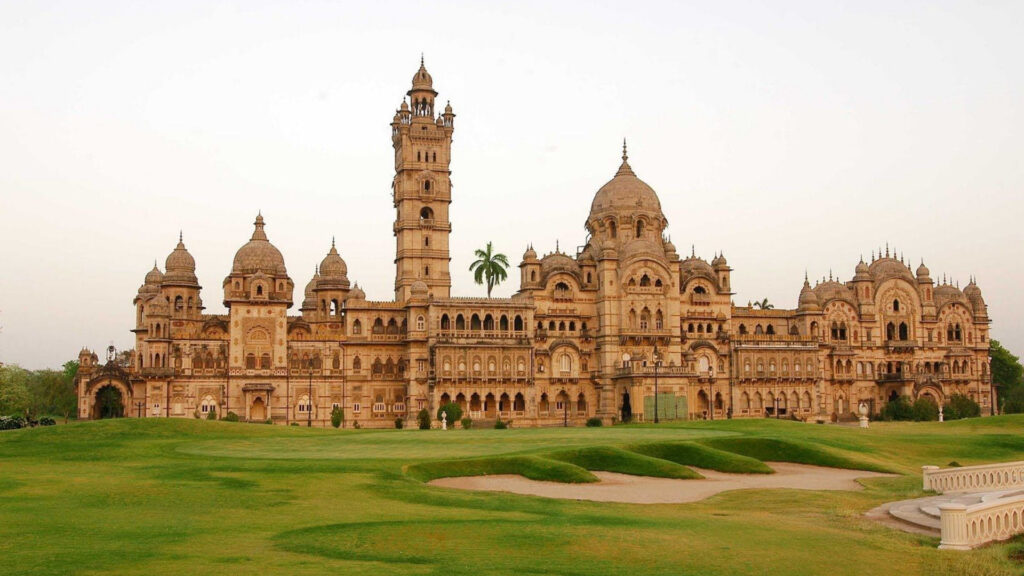
One of the largest private homes in India, the Laxmi Vilas palace serves as the residential palace for the Gaekwad royal family whose ancestors once ruled the Baroda state. The Palace was built by Sayajirao Gaekwad in the year 1890. Built in Indo-saracenic style, the Palace is 4 times bigger than Buckingham palace. The interior of the Palace has mosaics, chandeliers, and artworks of noted artists like Raja Ravi Verma who was once patronized by the Gaekwad royal family. The Palace complex includes the golf course, Moti baug palace, Maharaja Fateh Singh Museum, and Naulakhi stepwell, an ancient water resource system that was once utilized by people to overcome the parched lands of Gujarat. The Palace also contains Moti baug cricket ground and indoor teak floored tennis and badminton court. Tourists can visit the Palace from 9:30 AM to 5:00 PM every day except on Mondays and Public Holidays. The best time to visit the Palace is from 10:30 AM to 12:00 PM and The Entry fee for the Palace is Rs 200.
Also Read: Mandvi: Port Capital of Gujarat
3. Sayaji Baug:
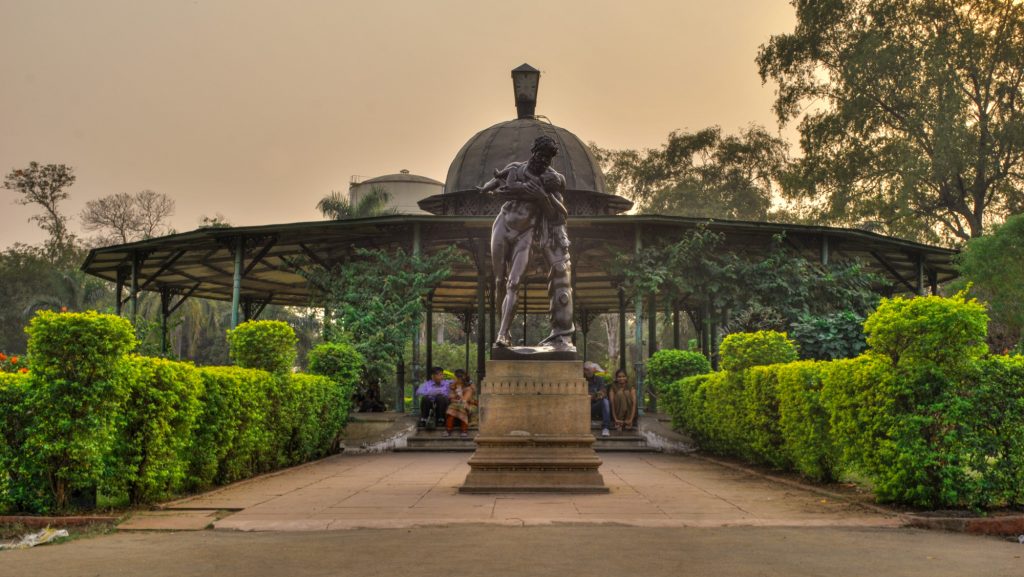
Built by Sayaji Rao in 1879 as a token of love to his subjects. The lush green garden, also known as Kamati Baug, is spread across an area of 113 acres. The Sayaji Garden has a range of spots for visitors to enjoy that includes Baroda Museum and Picture gallery, the Sardar Patel Planetarium, the Health museum, a toy train, and a few other joy rides.
4. Baroda Museum and Picture gallery:
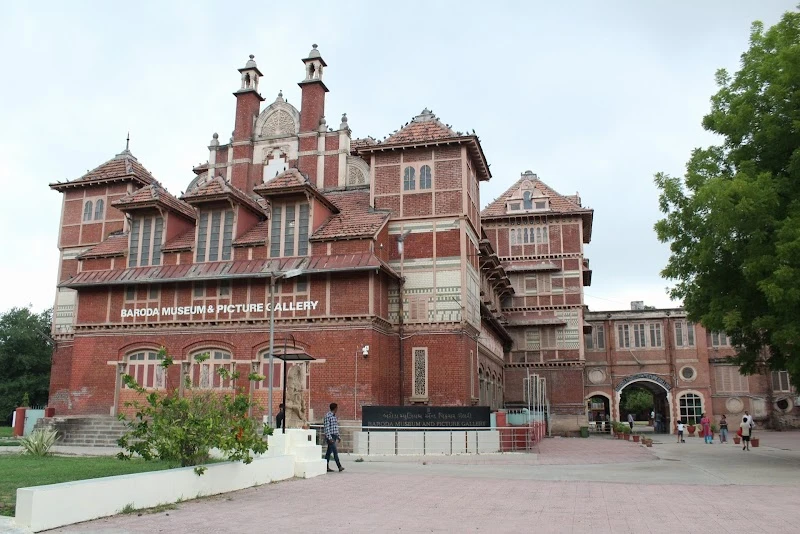
One of the kinds of museums that exist in India, the Baroda museum is a popular place located in Sayaji baug. It was constructed in 1894 and designed by the architect RD Chisholm. Later on, a picture gallery was added in 1910. The Egyptian mummy and a Whale skeleton that is exhibited in the museum form the major attractions of the museum. It also includes Tibetan, and European art and the famous Akota bronze belonging to the 5th century AD. On the other hand, The picture gallery contains paintings and artworks made by renowned artists like Raja Ravi Verma. The museum organizes several cultural and educational exhibitions on various topics. The time to visit the museum is from 10:30 AM to 5:00 PM and the Cost of the tickets is Rs.10 per visitor.
5. Chimnabai clock tower:
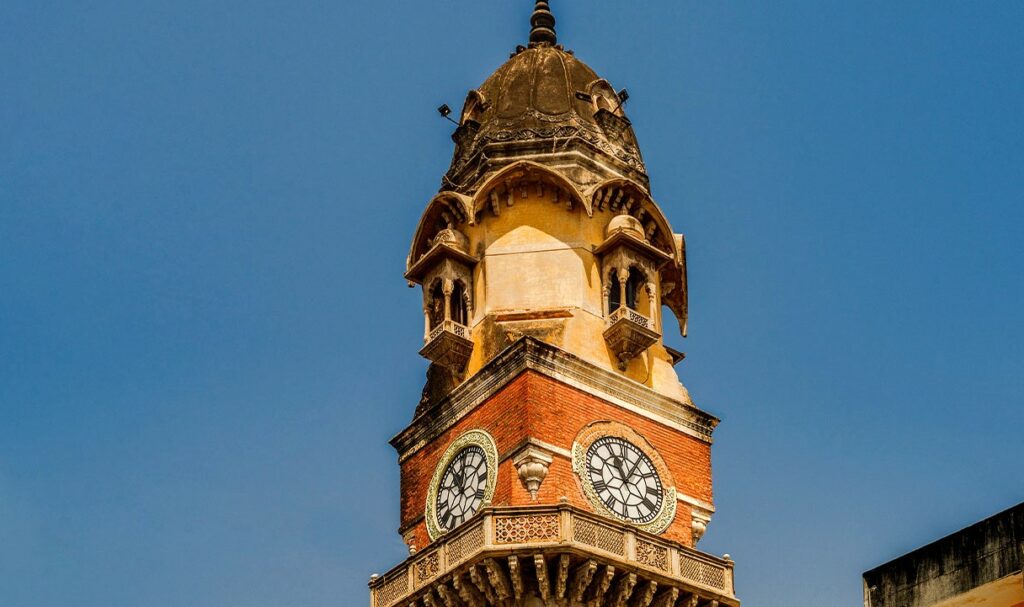
The Clock tower, which dominates the sky of the city, is named after the Maharani of Baroda, Chimnabai. Also known as the Raopura tower, the clock was brought by the Maharaja of Baroda and was installed in Vadodara in 1896. During the evening, the tower is illuminated with lights making it a picturesque location to witness.
Also Read: Explore The Best Gujarati Food: Popular All Over India
6. Kirti Mandir:
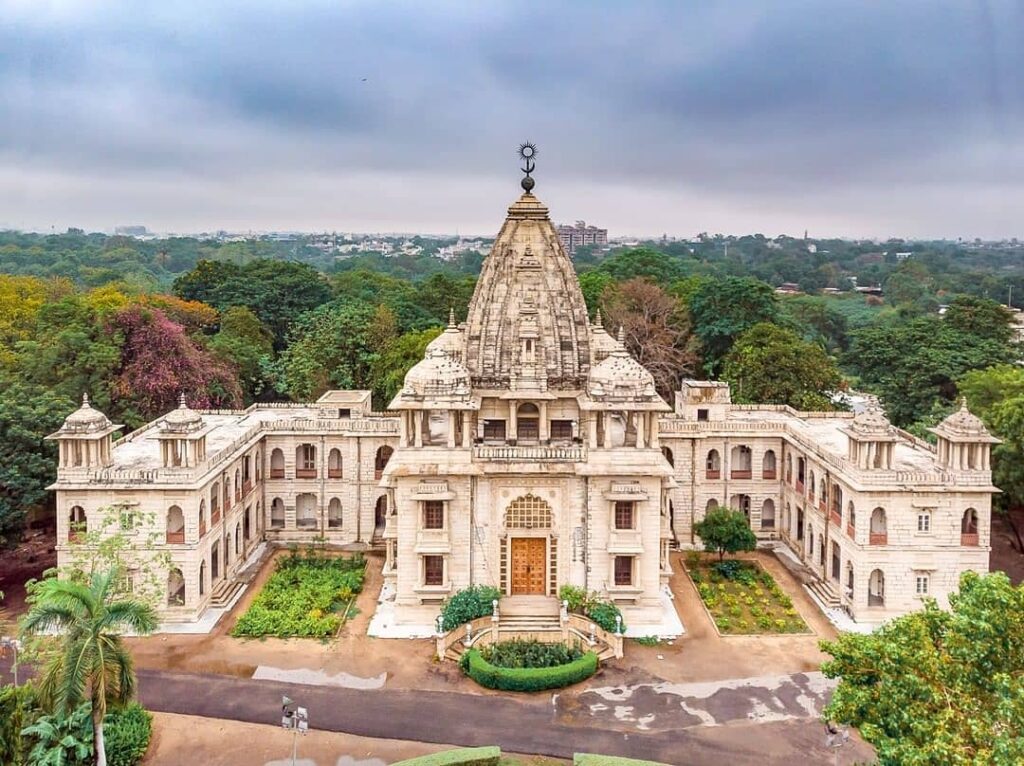
Situated at the heart of Vadodara city, this grand building was set up in honor of Sayaji the third’s silver jubilee in 1936. The Kirti Mandir is a Royal mausoleum of the Gaekwad family. The interior of the mausoleum consists of pictures and murals based on the themes of Mahabharat, Meerabai, and Gangavataram (Ganga’s incarnation) created by Nandalal Bose and Raja Ravi Verma. The fondness of the Gaekwads for the traditional arts and philosophy can be best described through the walls of the Kirti Mandir. The Mausoleum can be visited by anyone free of cost. The museum of fame opens from 9 AM to 12 noon and then from 2:30 PM to 5:30 PM.
7. Hathni waterfalls:
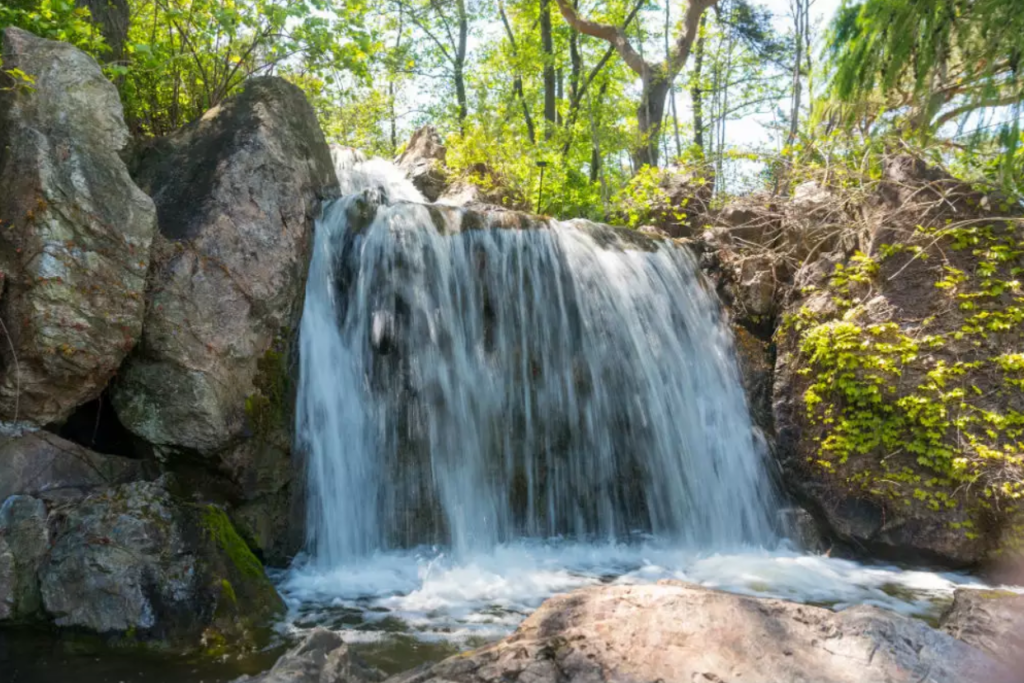
Surrounded by lush hills, the Hathni waterfalls are situated 75 KM from Vadodara. The waterfalls are accompanied by a small cave temple of Hathni Mata, adjacent to the waterfalls. The best time to visit the waterfalls is during the morning with fresh sunlight over the falls making a perfect breeze for the tourists.
8. Sursagar lake:
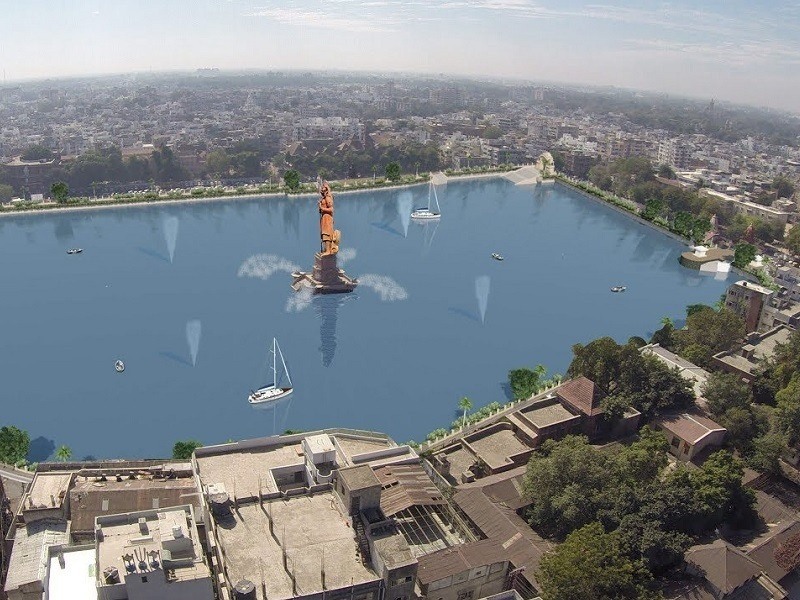
Constructed in the 18th century, the Sursagar lake is a tourist attraction in the central part of the city with a Shiva statue adding life to the place. The water remains in the lake, also known as Chand Talao, throughout the year. Every year, during the Mahashivratri, the lake and its surrounding are illuminated giving a surreal view. The best time to visit the Sursagar lake is during the sunset and sunrise as the reddish hue of the sun adds more beauty to the location.
Also Read: Dwarka: The Abode of Krishna
9. Shri Aurobindo Ashram:
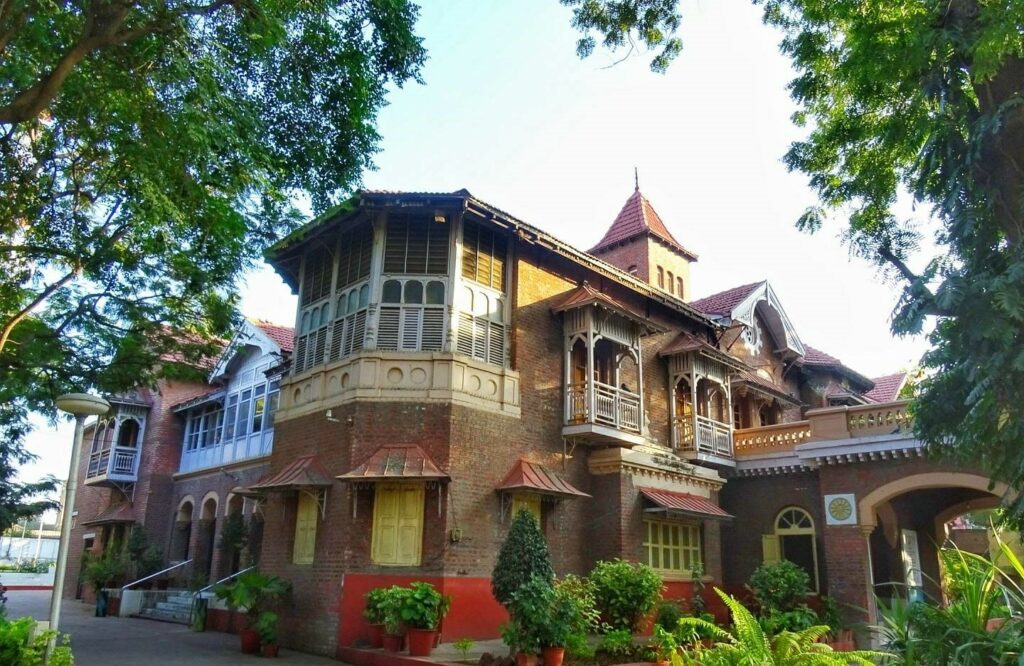
The only National memorial of Vadodara, The Aurobindo ashram was once the home to Sri-Aurobindo, India’s leading philosopher, literature, and poet. The Aurobindo Nivas, made entirely of wood, has two floors. The lower floor has an office, library, and museum while the upper floor contains meditation chambers and reading rooms. Sri Aurobindo lived in Baroda for 13 long years where he served the Baroda state in the administration departments and also as the principal of the Baroda college from 1893 to 1906. The Gujarat government handed over the bungalow to Sri-Aurobindo society on 29th September 1971 to develop it as a permanent memorial to honor Sri-Aurobindo. The Ashram is maintained by the members of the society itself. The Ashram opens from 9 AM to 7 PM and has no entry cost.
10. Suryanarayana Temple:
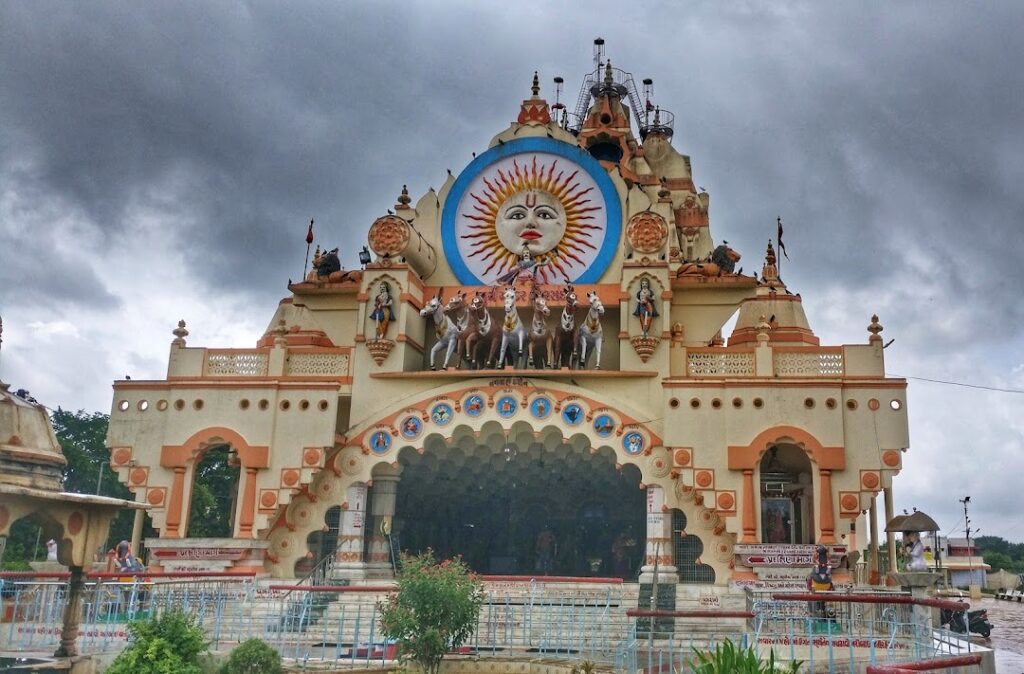
Standing firm on the raised grounds of Vadodara is the Suryanarayana Temple. The Suryanarayana Temple, dedicated to the Sun God was built by the Diwan Raoji appaji fans during the reign of Govindrao Gaekwad. The Tall trees and Verdures protect the temple from the rush and noise of busy roads. The devotees are welcomed by a giant statue of an Elephant that stands near the entrance.
Every Year, on the occasion of Rath state, The temple organizes a “Hawan”. On this day, the whole temple is adorned with rangolis, garlands, and lights. People from every corner of the city arrive on this day to seek the blessings of the sun god. The best time to visit the temple is early in the morning or the evening.
How to reach Vadodara?
Vadodara is a well-developed city when it comes to infrastructure. The best time to visit the city is from October to February, especially the months of October and February. During this time, the climate is neither extremely cold nor warm making it perfect for outings. Vadodara can be easily accessed through all three modes of transport i.e.
By Airways: Vadodara has a domestic airport named Civil Airport, Harni. Also known as Vadodara Airport, it also serves as an Indian Air force base and enjoys the status of an International Airport. Jet Airways and Indigo operate here daily. Taxis and buses can be accessed easily once you reach the Airport.
By Railways: One of the busiest Railway stations of Gujarat, Vadodara junction connects Vadodara to every major major city of India. Shatabdi and Rajdhani express to arrive at this station frequently.
By Roadways: One of the easiest routes to reach Vadodara is through Roadways as the city is blessed with unwrinkled metallic roads that make the entire trip smooth and less exhaustive. One can use private cabs, vehicles, or bus services as well.
Local transport within the city to stroll around include rickshaws, buses, and Taxis. The most commonly used among them is a rickshaw which is affordable and easily available. One can also book private vehicles for traveling around the city.
Conclusion
In these years, Vadodara has seen an all-around development and has emerged as one of the top tourist destinations with its uniquely built monuments that ooze art, glory, and royalty! Not just the monuments but the historical site Champaner and Pavagadh adds more charm to its grandeur. A blend of different cultures and reforms, Vadodara reminds you of the subtle change that civilizations went through.

